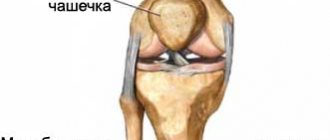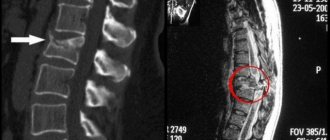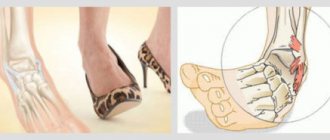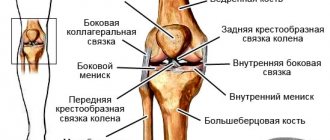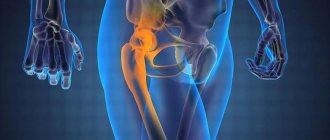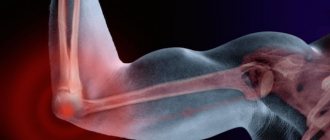Rib fractures are the most common injury to the chest. Rib fractures account for about 16% of the total number of fractures. In older people, rib fractures are more common, which is due to an age-related decrease in the elasticity of the bone structures of the chest. Rib fractures are accompanied by chest pain and lead to limited mobility of the chest, for this reason breathing becomes more shallow, which can cause impaired pulmonary ventilation. Multiple rib fractures can be accompanied by damage to the chest organs and pose a danger to the patient's life. The diagnosis of rib fracture is made on the basis of X-ray data; if necessary, ultrasound of the pleural cavity and its puncture are performed.
Causes of rib fractures
Broken ribs are the most common cause of mechanical trauma. In this case, a prerequisite for this type of injury is the presence of an unchanged bone structure, as well as a sudden impact on the chest.
Attention! Less common in clinical practice are pathological fractures; they can occur spontaneously and are usually caused by a decrease in bone density.
The main reasons why a rib may be broken include:
- Falling onto a flat surface without using arms to protect the chest or hitting protruding, high-density objects.
- A blow to the chest area. This cause is most often caused by car accidents.
- Compression of the chest in the anteroposterior and lateral direction.
The second group of causes associated with pathological injuries include:
- Reduced bone density due to osteoporosis. The most susceptible to this type of injury are female patients with early menopause or who have undergone surgery to remove the ovaries.
- Malignant process. If a patient has broken a rib and an area of decreased bone tissue density has been identified, it is necessary to exclude a tumor process. This may be a primary cancer or a metastatic lesion.
- Multiple myeloma. The pathology is characterized by damage to the skeletal system with a decrease in density and its subsequent destruction.
- Tuberculosis. Extracellular forms of tuberculosis infection are characterized by slow destruction of bone tissue.
Diagnosis of the disease
- Examination and history taking. When palpating the area of injury, you can feel crepitus of bone fragments and detect a step-shaped deformity.
- Symptom of interrupted inspiration - the patient interrupts a deep breath due to pain.
- A symptom of axial loads - when the chest is compressed in different planes, pain will be at the fracture site, and not at the pressure points.
- Payr's symptom is pain in the area of the fracture when bending to the healthy side.
- X-ray is the most common and accurate diagnostic method.
Rib fractures classification
Clinical classification includes various types of developed rib fractures.
Depending on the cause of the disease, damage is distinguished:
- Traumatic.
- Pathological. The pathology is associated with diseases affecting bone tissue.
Depending on the mechanism of injury, they can be:
- Straight. The damage is localized in the area where the impact occurred.
- Indirect. The zone shifts from the place where the force is applied, and the indentation leads to an angular displacement of the fragments. If the injury affects the area closer to the spinal column, then the damage shifts. The central fragment remains motionless, while the peripheral fragment moves.
- Tear-off. This type of injury can occur when the 9 or underlying bone is damaged. In this case, the fragments move over a long distance.
Depending on the damage to the skin, they are divided into:
- Open.
- Closed.
Open ones are in turn divided into:
- Primary open. Damage to the skin is associated with exposure to traumatic force.
- Secondary open. In this case, the skin is damaged due to the fragment and its release to the outside.
The closed view is divided into:
- Full. The bone is damaged along its entire length, all layers of bone tissue are destroyed.
- Incomplete. After exposure to a damaging agent, the integrity of one or more layers is damaged, but their complete destruction is not observed.
Depending on the nature of the damage, the varieties may be:
- Isolated.
- Combined. In addition to the violation of integrity, other parts of the skeletal system are involved in the pathological process.
- Not heavy. It is combined with a traumatic effect on soft tissue.
According to the type of fracture they can be:
- Transverse.
- Oblique.
- Helical.
- Hole-filled.
- Regional
- Splintered.
- Compression.
- Hammered.
This group also includes fenestrated complicated rib fractures.
Depending on the location, they can be:
- Diaphyseal.
- Metaphyseal.
- Epiphyseal.
- Based on the data obtained, treatment for rib fractures is selected.
Anatomical certificate
The rib cage consists of twelve thoracic vertebrae, to which twelve pairs of ribs are attached through joints. In front is the sternum, to which the cartilaginous parts of the ribs adjoin.
All ribs are divided into three types: true (I-VII pair), false (VIII-X pair) and oscillating (XI-XII pair). The difference between them is that true ribs are connected to the sternum by their own cartilaginous plates, while false ribs are not directly connected to the sternum; their cartilaginous parts are fused with the cartilage of the ribs that are located above. Finally, the cartilaginous part of the oscillating ribs is generally devoid of articulation with anything.
On the inner side of the ribs there is a groove in which the neurovascular bundle is located. If a rib breaks, it is also often damaged, which can lead to bleeding and disruption of the nutrition of the intercostal muscles.
Symptoms
Symptoms are characterized by typical symptoms. Differences may depend on the location, type, and type of injury. The patient has been complaining since the moment of injury. Gradually, in the absence of treatment, complaints may intensify, this is due to a possible increase in edema and an increase in hematoma, as well as complications caused by damage to internal organs. In adults, signs of rib and chest fractures are most pronounced.
Fractures of ribs without damage to internal organs
Closed-type damage is characterized by a milder clinical course. The main manifestations include pain, discomfort that occurs during breathing, as well as hematoma.
Pain
The main symptoms include severe pain. The pain from a rib fracture can be acute; as it heals, it becomes aching. Strengthening is associated with the act of breathing; depending on the nature of the injury, there is a deterioration in health during inhalation or exhalation.
Forced posture of the patient
If the ribs are broken, typical symptoms are manifested by the patient being forced into a forced position. This will alleviate the severity of pain. The patient spares the chest in everyday life and tries to perform smooth movements.
Symptoms of a complicated rib fracture with damage to internal organs can be manifested by lying down on the affected side, which will reduce pressure on the tissue. The patient can also walk in a bent position.
Shallow breathing
Signs of a fracture of the thoracic ribs in adults are manifested by impaired respiratory function. The patient's breathing becomes shallow and he is afraid to take deep breaths. At the same time, its frequency increases in order to meet the body's need for oxygen. If the disease is accompanied by damage to internal organs, a sharp deterioration in health may occur. The most common signs of a broken rib on the side of the chest, which results in injury to the lung tissue. Against the background of shallow breathing, cyanosis and impaired consciousness are observed.
Interrupted inspiration syndrome
In most cases, it is not difficult for the doctor to identify the signs of injury; diagnosis is possible using a visual examination and assessment of respiratory function. Due to pain, the patient's breathing becomes intermittent. When trying to make a deep entry, the patient abruptly stops, which provokes insufficient air supply.
Changes in the area of the rib injury
The most common manifestations include hematoma, tissue swelling associated with edema, and abrasions.
Bleeding can be caused by a violation of the integrity of the skin. The hematoma may initially have clear boundaries in the area of impact of the injury. As the disease progresses, the hematoma may spread to other parts.
Breast deformity
In addition to pain, the patient may experience chest deformation. Most often, this symptom is associated with a violation of the integrity of several areas, as well as their complete damage. Recession of the chest leads to a pronounced deterioration in health, which may be associated with rupture of the lungs and pleura. Bulging becomes a manifestation of the formation of bone fragments.
Crepitus
Crepitus or specific sounds during the act of breathing are associated with the formation of fragments. The sound effect is caused by bones rubbing against each other. Strengthening occurs with multiple injuries. In some cases, crepitus can be heard from a distance.
Fractures of ribs with damage to internal organs and their complications
The nature of the symptoms depends on which organ is damaged. If the integrity of the liver is compromised, severe bleeding is observed. The patient notes a marked deterioration in health with hemodynamic disturbances, a drop in blood pressure, and an increase in heart rate.
Rupture of the aorta or other large vessels by bone fragments leads to loss of consciousness and a sharp drop in pressure.
Attention! The condition is life-threatening.
Rupture of the lung tissue and pleura by bone fragments is manifested by subcutaneous emphysema. The patient visualizes bulging of the skin, which intensifies with inspiration. Respiratory function is also impaired, the patient experiences respiratory failure, which is caused by the formation of a hematoma.
The most common complications include:
- Pneumothorax.
- Hemothorax.
- Cardiopulmonary shock.
- Emphysema.
To assess general well-being, it is necessary to determine general signs, with pain being the main symptom of a rib fracture.
Clinical picture
Let's look at the symptoms of a rib fracture.
- Pain - it occurs in the area of the fracture, intensifies with movements, inhalation and exhalation, and coughing. Reducing pain is possible at rest and in a sitting position.
- Shallow breathing and lag in breathing of the half of the chest where there is injury.
- Swelling of tissue in the area of injury.
- Hematoma at the fracture site - relevant for traumatic fractures resulting from direct mechanical impact
- The sound of rubbing bones or a crunch during injury is important for fractures with a large number of fragments, or for multiple fractures of one rib without displacement of individual parts of the damaged bone
With multiple and complicated fractures, the following signs may appear:
- Subcutaneous emphysema - when the lung is damaged, air can gradually enter under the skin.
- Hemoptysis - when coughing, blood is released from the respiratory tract. This symptom indicates damage to the lung tissue.
What to do if a rib is broken
In order to know what signs can be used to identify a rib fracture and identify complications, it is important to consult a doctor in a timely manner.
Diagnostics
To make a diagnosis, it is necessary to first find out the patient’s complaints, as well as medical history. The doctor clarifies the nature and conditions of the injury, as well as the duration of its impact. If the damage is pathological, the dynamics of the disease, possible contact with a person infected with tuberculosis, as well as the woman’s gynecological history are clarified.
During examination, the condition of the skin is assessed, with the possible detection of cyanosis. The pathological focus is palpated, with an assessment of pain and crepitus, as well as displacement of bone fragments.
During the inspection, methods are used to suggest the presence of damage. These include:
- Assessment of Payr's symptom. The patient is advised to lean in the opposite direction. In this case, severe pain or inability to bend is noted.
- Symptom of axial load. The doctor gently compresses the chest in different directions. Damage to bone tissue is manifested by severe pain and easier mobility of the area.
- Symptom of interrupted inspiration. An attempt to do something deep ends in sharp pain. To confirm the diagnosis of a rib fracture, as well as to clarify the nature of the injury and identify possible complications, laboratory and instrumental studies can be used. These include:
- General clinical blood test. The laboratory method is used if bleeding is suspected. By measuring hemoglobin levels, ongoing blood loss can be detected.
- Chest X-ray. This non-invasive test is the most common in clinical practice. For a more accurate diagnosis and assessment of severity, radiography in several projections is prescribed. The images are examined by several specialists.
- Computer or magnetic resonance imaging. The radiation method is used in case of difficulties in making a diagnosis that arise during radiography. These studies are less common due to their high cost.
- Ultrasound scan of the chest. A non-invasive and widespread study is indicated for diagnosing damage to internal organs, as well as identifying the severity of the hematoma.
In a hospital setting or at home, treatment for a rib fracture is selected only after a complete diagnosis.
If there is a crack, the symptoms may have mild manifestations. In this case, there is no violation of the integrity of the skin and bone structures. The formation of a hematoma is possible, but the pain gradually subsides. It bothers the patient for several hours.
A fracture is characterized by damage to the bone, but preservation of its anatomical location. The disease is often confused with a bruise, since the pain syndrome may be insignificant, and the patient is more concerned about hematoma and tissue swelling.
Violation of integrity is distinguished by the specificity of clinical manifestations, as well as increasing pain and possible respiratory failure.
The decision of the attending physician determines how to treat a rib fracture at home or in a hospital setting. This is due to the fact that treatment of rib fractures at home is possible only after diagnosis.
First aid to the victim
Before a rib fracture is treated, first aid is provided to the victim. To do this, it is necessary to initially assess the severity of the pathological process, as well as the presence of complications. Those around you need to identify the characteristic symptoms of fractured ribs and sternum. The basic rules of first aid include:
- Anesthesia. If there are no signs of respiratory dysfunction, the patient is prescribed available analgesics. These include non-steroidal anti-inflammatory drugs.
- Call an ambulance. To prevent complications, treating broken ribs at home is unacceptable. The patient requires diagnostics. Experts explain in detail what to do if the victim has broken ribs.
- Local cold exposure. Applying ice to the site of injury can relieve the severity of a hematoma or hemothorax. Prehospital treatment of a thoracic rib fracture reduces the intensity of pain.
- Limitation of motor activity of the chest. If there are no signs of violation of the integrity of the skin, a tight bandage may be applied. Tight bandaging helps solve several problems, such as treating a rib fracture by allowing the fragments to heal more quickly and preventing damage to internal organs.
- Find a comfortable position. It is preferable to remain in a sitting position to transport the patient.
- Applying a sterile dressing. If there is an open fracture, it is necessary to apply a sterile napkin in order to prevent infection from entering the body. It is prohibited to remove bone fragments or pieces of clothing, as well as foreign objects.
In order to find out what those around you do when a rib is broken, just call the ambulance service.
Which specialist should I contact?
In order to establish a diagnosis and determine how to treat the pathology, you need to seek help from a surgical or trauma center. Depending on the level of the clinic, a traumatologist or surgeon deals with the problem. During examination and diagnostics, he determines how to treat a rib fracture at home. The diagnosis can be made by a clinic doctor for minor injuries.
First aid rules
When providing first aid to a person with a broken rib, you need to know exactly what measures should be taken in each specific case. At first glance, in general terms they are all similar, however, depending on the nature of the fractures, they may differ. Thus, with single fractures and cracks, a minimum of actions aimed at alleviating the patient’s condition is sufficient, but with more complex injuries it is necessary to perform a clear sequence of actions as quickly as possible. Therefore, further we will talk about the features of first aid, depending on the type of rib fracture.
Uncomplicated closed fracture
An uncomplicated closed fracture is the simplest and least dangerous type of injury. In this case, one or two ribs on one side are usually affected. Complications develop very rarely, and the victim, as a rule, is quite able to get to a medical facility on his own. However, even in this case, first aid must be provided to him.
First of all, the patient should be given pain medication. This could be Ibuprofen, Analgin or Diclofenac. As a result, the pain symptom will decrease, and the person will be able to adequately assess his condition.
The next step is immobilization of the damaged area. If the injury is mild, then it is enough to stick several wide strips of adhesive tape on the injured area. This will help reduce the mobility of bone fragments.
The victim is helped to take a comfortable position in which pain will be minimal. It is best to sit half-sitting or roll over onto your injured side so that the broken ribs are fixed.
Cold is applied to the injury site. This could be an ice pack or a heating pad with very cold water. As a result, sensitivity in the injured area will decrease and blood vessels will narrow. As a result, bleeding, if any, will slow down, swelling will subside, and the development of a hematoma can be prevented.
After taking all these measures, the victim must be sent to the hospital. Please note that despite the comparative “lightness” of such an injury, a person should not be allowed to drive on his own - his condition may unexpectedly and very quickly worsen.
Multiple closed fracture
Unfortunately, often due to injury, several ribs can be damaged at once. These multiple fractures are very serious because rib fragments can damage internal organs. That is why assistance for closed multiple fractures should be provided immediately.
The victim is given an anesthetic to relieve pain, after which the chest is freed from excess clothing, facilitating the flow of air. The patient must be immobilized by first positioning him as comfortably as possible. The optimal position is half-sitting or lying on the injured side. In order to fix the ribs, a tight bandage should be applied, which, however, should not interfere with breathing movements. To avoid displacement of fragments, the patient's arm can be used as a splint.
In order to reduce the intensity of pain and relieve swelling, dry cold should be applied to the injured area. After this, you need to call an ambulance and carefully monitor the patient’s condition until the doctors arrive. If first aid was provided correctly, this will facilitate further treatment and reduce the risk of soft tissue damage during transport of the patient to a medical facility.
Open fracture
An open fracture is an injury that entails a much greater number of risks. Delay in this case can cost the patient’s life, and therefore first aid should be provided as quickly, smoothly and qualified as possible.
First of all, the bleeding should be stopped. Please note that no foreign objects or bone fragments should be removed from the wound. It must be covered with a sterile bandage, having previously been treated with disinfectants and hemostatic agents.
After this, you need to apply a fixing bandage. You can use a wide bandage or a piece of fabric of suitable width for these purposes. The victim takes as deep a breath as possible, after which the person providing assistance bandages him from the healthy area to the fracture site from left to right. The bandage should not sag, but it should not be too tight. It is advisable to cover the layer of bandages with a material that does not allow air to pass through, for example, cellophane.
Next, the patient is given an anesthetic. You can also give an injection of a non-narcotic pain reliever. In order to reduce bleeding and pain, dry cold is applied to the wound. The patient is helped to take the most comfortable position that would prevent the movement of debris. After this, you should call an ambulance - the sooner the better, since bleeding or infection in the wound can have fatal consequences for the victim. Therefore, he should be transferred to the care of doctors as soon as possible and transported to the surgical department.
First aid for pneumothorax and shock
As noted above, with serious fractures, the development of pneumothorax is likely - accumulation of air in the pleural cavity. In this case, measures should be taken as soon as possible, because the slightest delay could cost the patient his life.
At the first signs of pneumothorax, the main task is to stop the penetration of air into the pleural cavity. A tight, airtight bandage will help with this. Most likely, you will have to use improvised means: a scarf, a T-shirt or a shirt. Of course, in this case there is no need to talk about complete sterility, but take into account that only the cleanest part of the used tissue should come into contact with the wound.
In order to make the bandage completely airtight, you can apply plastic film on top.
To make it easier for the victim to breathe, he must be positioned so that the upper part of the body is elevated. If a person has lost consciousness, he should be brought back to consciousness as soon as possible by bringing a product with a pungent odor to his nose. In the absence of ammonia, this could be nail polish remover, perfume, or even gasoline. Keeping the victim conscious is one of the main tasks.
Traumatic shock is another dangerous consequence of rib fractures. This condition is extremely undesirable because it can lead to the death of the victim. Therefore, action should be taken immediately.
Traumatic shock has several stages. At the initial stage, the patient is very agitated and complains of pain. A panic attack and manifestations of aggression may occur. The skin is pale, blood pressure is slightly increased, the pupils are dilated. An increase in heart rate may occur. The next stage is to plunge the patient into apathy. The patient does not complain of pain, although it does not decrease. Heart rate increases, blood pressure decreases. Body temperature drops, the patient stops responding to sounds and light.
In such a case, the victim is placed on his back, with his head slightly lowered and his legs raised approximately twenty centimeters. To protect the patient from hypothermia, he is covered with blankets. It is necessary to provide the person with complete peace, stop panic attacks and attacks of fear. It is imperative to stop the bleeding and give pain relief.
What not to do if you have a broken rib
It is preferable to provide medical assistance to a professional. In this case, it is necessary to adhere to the basic rules that will prevent the development of complications. Among them are:
- Prohibition on physical activity, attempts to inhale or cough.
- Limiting rough palpation, which can lead to pathological displacement of fragments, as well as damage to nerve fibers and blood vessels.
- Making attempts to independently reduce damaged bone structures.
- Compliance with these rules will speed up the healing process.
To speed up the treatment of rib fracture symptoms at home or hospital treatment, it is important to avoid mistakes in first aid.
Treatment at home
Treatment of an uncomplicated rib fracture in most cases is carried out on an outpatient basis. The patient is prescribed various non-drug methods. The main areas of therapy include:
- Compliance with a gentle regime. When asked how to sleep with a fracture, you can sleep on the healthy side. In this case, it is necessary to limit physical activity, heavy lifting, and active movements of the upper shoulder girdle.
- Taking medications. In the initial stages of the disease, it is recommended to use drugs that reduce the severity of pain. Treatment for a closed rib fracture includes the use of ointments and gels.
- Applying a tight bandage. To limit motor activity of the chest, it is possible to use elastic bandaging or wearing a corset.
- Nutrition that includes a sufficient amount of protein in the diet, as well as foods rich in calcium and various minerals and trace elements.
Treatment differs if a rib fracture occurs without displacement or with displacement.
Factors provoking complications
Some pathologies develop due to exposure to traumatic force. Others are the result of careless or incorrect actions when providing first aid, transporting and treating the victim.
The following factors can provoke negative consequences:
- movements after injury;
- applying a tight bandage;
- infection;
- alcohol consumption;
- elderly age;
- multiple injuries;
- selection of inappropriate sleeping position;
- physical exercise;
- cough suppression;
- inability to take a full breath;
- improper fixation of bone fragments;
- trying to set the fracture yourself;
- failure to follow recommendations regarding breathing exercises.
Complications from rib fractures
Complications can develop with late provision of medical care, the presence of severe concomitant injuries, as well as incorrectly chosen treatment tactics. The most common complications include:
- Formation of an osteoid lump. The callus, leading to the fusion of fragments, can increase in size. In addition to discomfort, pain and periodic inflammation develop. At the initial stages of treatment of education, physiotherapeutic procedures are used. They allow you to slow down the process of callus growth.
- Pneumothorax. Violation of the integrity of the pleura leads to the gradual entry of air into the pleural cavity. The layers of the pleura do not close, and air does not escape; in this case, slight damage to the lung is possible if the ribs are fractured. Gradually, the patient notices deterioration in breathing, a feeling of lack of air, as well as a gradual deterioration in well-being.
- Hemothorax. Damage to the pleural cavity involving blood vessels in the pathological process leads to bleeding and accumulation of blood in the pleura. In addition to impaired respiratory function, fibrin filaments are deposited between the layers of the pleura. As a result, the likelihood of adhesion formation increases. In order to exclude hemothorax, it is important to seek help and determine with a doctor what to do if the ribs on the right side or side of the back are broken, since this type of injury is the most common such complication.
- Neuralgia. Damage to nerve endings is the cause of chronic pain. Discomfort occurs when changing body position, deep breathing, and palpation. It must be remembered that a compression fracture of a rib is often accompanied by distant pain.
- Pleurisy. Inflammation of the pleural layers leads not only to pain and deterioration of well-being, but also to possible involvement of lung tissue in the pathological process.
- Pneumonia. Pneumonia is one of the most common complications caused by congestion in the lung tissue. A decrease in respiratory excursion slows down blood flow in the lung tissue, therefore increasing the activity of microbes that cause inflammation.
- Internal bleeding. In addition to damage to the lungs, the integrity of large vessels or the liver may be damaged.
Structure of the human chest
The chest primarily protects the organs located inside it. It consists of the thoracic spine, sternum, and a dozen pairs of ribs. There is a front wall, a back wall and two side walls on the right and left.
The first are 7 pairs of large ribs connected to a flat bone called the sternum. These edges are called true. In the lower part there are 3 ribs connecting to the costal cartilage - false. Two floating ribs, articulated only with the thoracic spine, are the confining part.
The structure of the bones of the human chest
Stages of healing of a rib fracture
Healing occurs in several successive stages. Knowing the duration of each phase helps to comprehensively influence the cause. Depending on the stage, they determine what is done for various rib fractures. The main stages of the disease include:
- 1 or the stage of callus formation. In this case, a blood clot containing fibroblasts accumulates at the site of damage. The latter, in turn, begin to produce connective tissue, which becomes the site of callus formation.
- Stage 2 or formation of osteoid callus. In the area of connective tissue, mineral deposits occur. They lead to an increase in the density of this formation, creating immobility.
- Stage 3. The final healing process is characterized by the deposition of hydroxyapatites, which enhance the adhesion of damaged areas. The size of the callus exceeds the diameter of the bone, but gradually it becomes equal to it or decreases slightly.
In order to decide what to do in case of a rib fracture at home or in a hospital setting, you need to seek help from a medical institution. In order to eliminate rib fracture symptoms and treatment, as well as recommendations on how to sleep, it is necessary to conduct a comprehensive examination to exclude complications.
Treatment and rehabilitation
Restoration of ribs after a fracture in complicated injuries should take place under medical supervision in a hospital setting. It usually includes medication, physical therapy and surgical methods (if necessary). At the request of the patient and the capabilities of the medical institution, the use of alternative therapy is possible.
The following groups of drugs are used for treatment:
- anti-inflammatory;
- painkillers;
- immunostimulating;
- absorbable;
- wound healing;
- expectorants.
Treatment of complex rib fractures will require surgery.
If complications occur, rehabilitation after a rib fracture takes much longer.
To improve tissue nutrition, accelerate their regeneration, as well as normal resorption of callus, physiotherapeutic procedures are prescribed:
- microcurrents;
- medicinal electrophoresis;
- magnetic therapy;
- laser therapy;
- UHF.
To eliminate stagnant processes, hirudotherapy is considered an effective method of treatment, and acupuncture is used to eliminate pain and stimulate the body's defenses.
